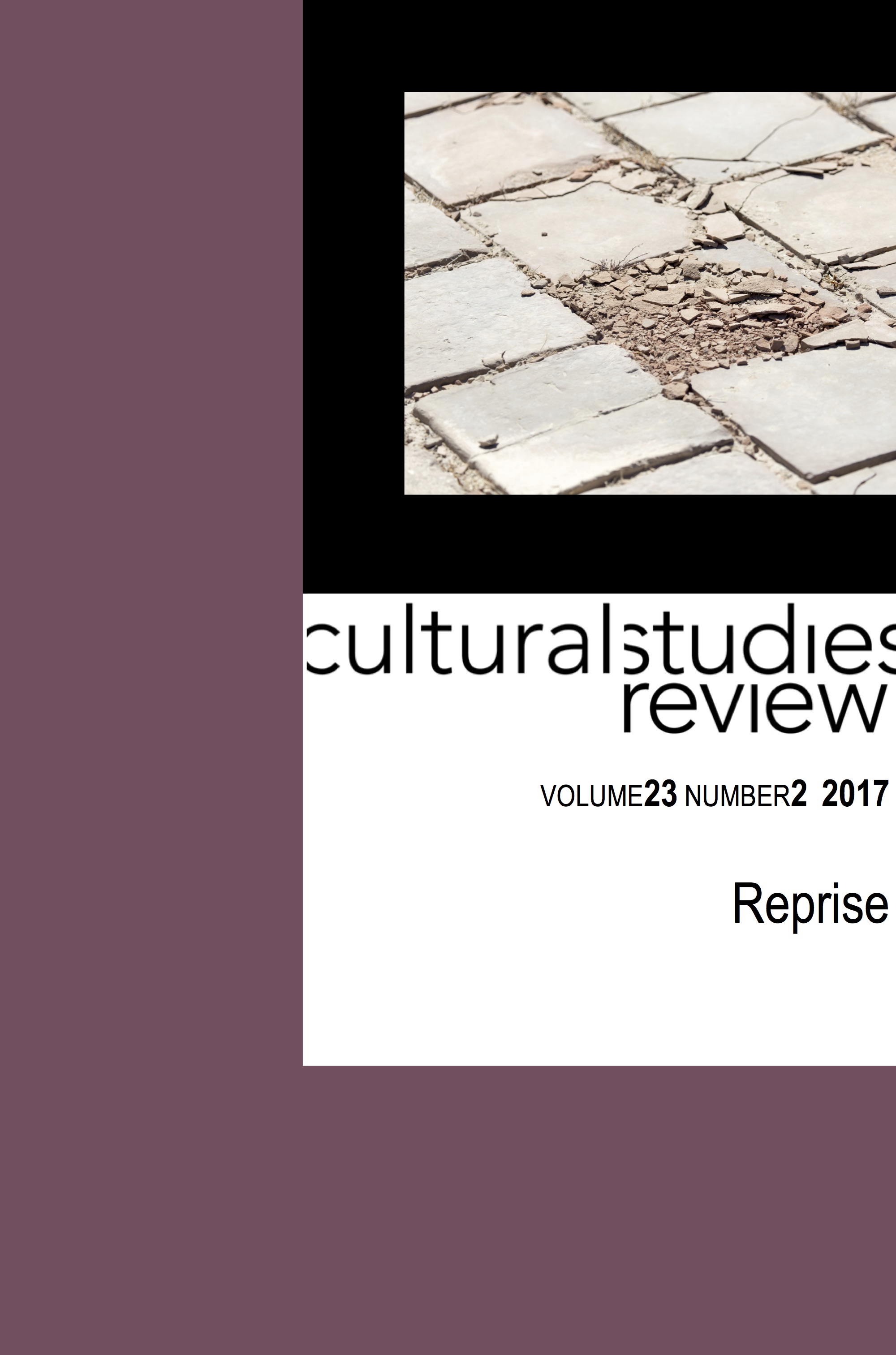Blood Call and ‘Natural Flutters’: Xavier Herbert’s Racialised Quartet of Heteronormativity
Main Article Content
Abstract
Article Details
Section
Authors who publish with this journal agree to the following terms:
a) Authors retain copyright and grant the journal right of first publication with the work simultaneously licensed undera Creative Commons Attribution License that allows others to share and adapt the work with an acknowledgement of the work's authorship and initial publication in this journal.
b) Authors are able to enter into separate, additional contractual arrangements for the non-exclusive distribution of the journal's published version of the work (e.g., post it to an institutional repository or publish it in a book), with an acknowledgement of its initial publication in this journal.
c) Authors are permitted and encouraged to post their work online (e.g., in institutional repositories or on their website) prior to and during the submission process, as it can lead to productive exchanges, as well as earlier and greater citation of published work (See The Open Access Citation Advantage Service). Where authors include such a work in an institutional repository or on their website (ie. a copy of a work which has been published in a UTS ePRESS journal, or a pre-print or post-print version of that work), we request that they include a statement that acknowledges the UTS ePRESS publication including the name of the journal, the volume number and a web-link to the journal item.
d) Authors should be aware that the Creative Commons Attribution (CC-BY) License permits readers to share (copy and redistribute the work in any medium or format) and adapt (remix, transform, and build upon the work) for any purpose, even commercially, provided they also give appropriate credit to the work, provide a link to the license, and indicate if changes were made. They may do these things in any reasonable manner, but not in any way that suggests you or your publisher endorses their use.
References
Anderson, W., The Cultivation of Whiteness: Science, Health and Racial Destiny, Melbourne University Press, Melbourne, 2002.
Bell, D., Daughters of the Dreaming, McPhee Gribble, Melbourne, 1983, p. 98.
Bringing Them Home:Report of the National Inquiry into the Separation of Aboriginal and Torres Strait Islander Children from Their Families, April 1997, https://www.humanrights.gov.au/publications/bringing-them-home-chapter-7.
Charnley, W., ‘The Antiquity of the Aboriginal’, Walkabout, 1 February 1947, p. 30.
Conor, L., ‘“This Striking Ornament of Nature”: The “Native Belle” in the Australian Colonial Scene’, Feminist Theory, vol. 7, no. 2: August 2006, pp. 197–218. https://doi.org/10.1177/1464700106064420.
Conor, L., Skin Deep: Settler Impressions of Aboriginal Women, UWAP, Perth, 2012.
Conor, L., ‘“Black Velvet” and ”Purple Indignation”: Print Responses to Japanese ”Poaching” of Aboriginal Women’, Aboriginal History, vol. 37, 2013, pp. 51–77.
Dyer, R., White, Routledge, London, 1997.
Elder, C., Dreams and Nightmares of a White Australia: Representing Aboriginal Assimilation in the Mid-twentieth Century, Peter Lang, New York, 2009.
Ellinghaus, K., Taking Assimilation to Heart: Marriages of White Women and Indigenous Men in the United States & Australia, 1887–1937, Nebraska University Press, Lincoln, 2006. https://doi.org/10.2307/j.ctt1djmhvp.
Fanon, F., Black Skin White Masks, New York, Grove Press, 1967.
Foucault, M., The History of Sexuality Volume 1: An Introduction, Allen Lane, London, 1976.
Haebich, A., Broken Circles: Fragmenting Indigenous Families, 1800–2000, Fremantle Arts Centre Press, Fremantle, 2000, p. 293.
Harrison, M., review of Henry Finlay, To Have but Not To Hold: A History of Attitudes to Marriage and Divorce in Australia 1858–1975, The Federation Press, Sydney, 2005, https://www.law.unimelb.edu.au/files/dmfile/30_2_10.pdf.
Herbert, X., Capricornia, HarperCollins, Sydney, 1990 [1938].
Herbert, X., Poor Fellow My Country, William Collins, Sydney, 1975.
Hill, E., The Great Australian Loneliness, Robertson and Mullens, Melbourne, 1943.
Hobson, J., Venus in the Dark: Blackness and Beauty in Popular Culture, Routledge, New York, 2005.https://doi.org/10.4324/9780203700563.
Jolliffe, E., Witchetty’s Tribe: Aboriginal Cartoon Fun, Sungravure, Sydney, c. 1967.
Konishi, S., The Aboriginal Male in the Enlightenment World, Pickering and Chatto, London, 2012.https://doi.org/10.4324/9781315655444.
Mann’s Emigrant’s Guide to Australia; including The Colonies of New South Wales, Port Phillip.South Australia, Western Australia, and Moreton Bay, William Strange, London,1849.
McGrath, A., ‘Consent, Marriage and Colonialism: Indigenous Australian Women and Colonizer Marriages’ in Journal of Colonialism and Colonial History, vol. 6, no. 3: 2005, pp. 1–23. https://doi.org/10.1353/cch.2006.0016.
McGrath, A., Illicit Love: Interracial Sex and Love in the United State and Australia, University of Nebraska Press, Lincoln, 2015.https://doi.org/10.2307/j.ctt1d98bzf.
McGregor, R., Imagined Destinies: Aboriginal Australians and the Doomed Race Theory, 1880–1939, Melbourne University Press, Melbourne, 1997.
McQuire, S., Visions of Modernity: Representation, Memory, Time and Space in the Age of the Camera, Sage, London, 1997.
Muecke, S., Ancient and Modern: Time Culture and Indigenous Philosophy, University of New South Wales Press, Sydney, 2004.
O’Connell, L., ‘“Matrimonial Ceremonies Displayed”, Popular Ethnography and Enlightened Imperialism’, Eighteenth-Century Life, vol. 26, no. 3: 2002 pp. 98–116. https://doi.org/10.1215/00982601-26-3-98.
Probyn-Rapsey, F., ‘Some Whites are Whiter than Others: The Whitefella Skin Politics of Xavier Herbert and Cecil Cook’, JASAL: Journal of the Association for the Study of Australian Literature, Special Issue ‘Spectres, Screens, Shadows, Mirrors’, 2007, pp. 157–73.
Probyn-Rapsey, F., Made to Matter: White Fathers, Stolen Generations, Sydney University Press, Sydney, 2013.
Ruddick, N., ‘Courtship with a Club: Wife-Capture in Prehistoric Fiction, 1865–1914’, Yearbook of English Studies, vol. 37, no. 2: 2007, pp. 45–63.
Salemme, N., ‘Bras N Things unveils sexy shoot for Body Bliss line with Steph Smith, Tahnee Atkinson’, News Corp, 10 May 2016, http://www.news.com.au/lifestyle/fashion/people/bras-n-things-unveils-sexy-shoot-for-new-body-bliss-line/news-story/cfc93eb76aa91db61fd41fd1a7431969.
Smith, E., ‘White Aborigines’, Intervention: International Journal of Postcolonial Studies, vol. 16, no. 1: 2014, pp. 97–116.
Stoler, A.L., Carnal Knowledge and Imperial Power: Race and the Intimate in Colonial Rule, University of California Press, Berkeley, 2002.
Stone, S. (ed.), Aborigines in White Australia: A Documentary History of the Attitudes Affecting Official Policy and the Australian Aborigine 1697–1973, Heinemann Educational Books, South Yarra, 1974.
Veracini, L., Settler Colonialism: A Theoretical Overview, Palgrave, London, 2010. https://doi.org/10.1057/9780230299191.
Wolfe, P., Settler Colonialism and the Transformation of Anthropology, Cassell, London, 1999.
